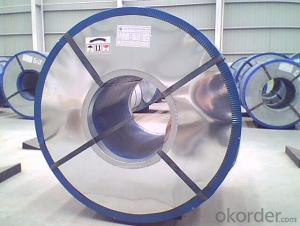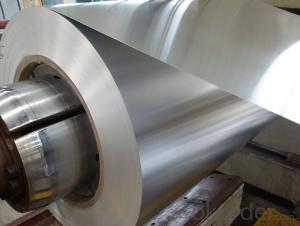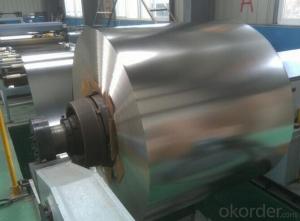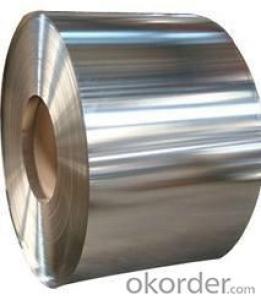Electrolytic Tinplate Coils and Steets for Tin Cans Making
- Loading Port:
- Tianjin
- Payment Terms:
- TT OR LC
- Min Order Qty:
- 25 m.t
- Supply Capability:
- 7000 m.t/month
OKorder Service Pledge
OKorder Financial Service
You Might Also Like
1.Structure of Electrolytic Tin Plate Coils and Sheets for Foods Metal Packaging Description
Electrolytic Tin Plate Coils and Sheets for Foods Metal Packaging, is one thin steel sheet with a coating of tin applied by electrolytic deposition. Tinplate made by this process is essentially a sandwich in which the central core is strip steel. This core is cleaned in a pickling solution and then fed through tanks containing electrolyte, where tin is deposited on both sides. As the strip passes between high-frequency electric induction coils, it is heated so that the tin coating melts and flows to form a lustrous coat.
2.Main Features of the Electrolytic Tin Plate Coils and Sheets for Foods Metal Packaging
Appearance – Electrolytic Tin Plate is characterized by its beautiful metallic luster. Products with various kinds of surface roughness are produced by selecting the surface finish of the substrate steel sheet.
Paintability and printability – Electrolytic Tin Plates have excellent paintability and printability. Printing is beautifully finished using various lacquers and inks.
Formability and strength – Electrolytic Tin Plates have got very good formability and strength. By selecting a proper temper grade, appropriate formability is obtained for different applications as well as the required strength after forming.
Corrosion resistance – Tinplate has got good corrosion resistance. By selecting a proper coating weight, appropriate corrosion resistance is obtained against container contents. Coated items should meet 24 hour 5 % salt spray requirement.
Solderability and weldability – Electrolytic Tin Plates can be joined both by soldering or welding. These properties of tinplate are used for making various types of cans.
Hygienic – Tin coating provides good and non toxic barrier properties to protect food products from impurities, bacteria, moisture, light and odours.
Safe – Tinplate being low weight and high strength makes food cans easy to ship and transport.
Eco friendly – Tinplate offers 100 % recyclability.
Tin is not good for low temperature applications since it changes structure and loses adhesion when exposed to temperatures below – 40 deg C.
3.Electrolytic Tin Plate Coils and Sheets for Foods Metal Packaging Images
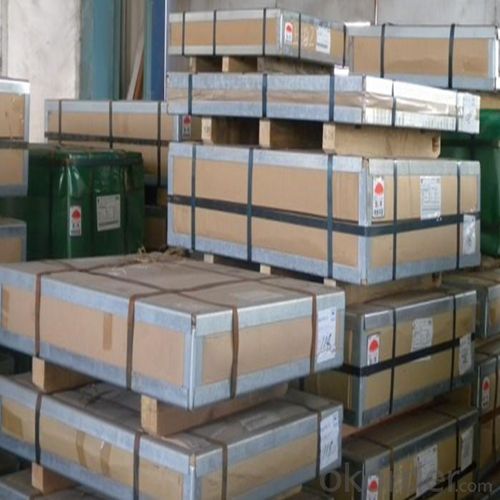
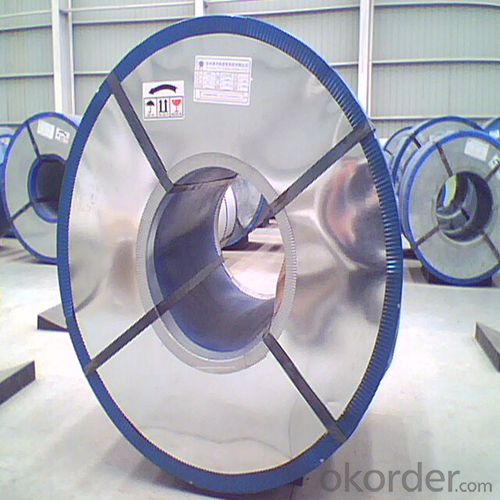
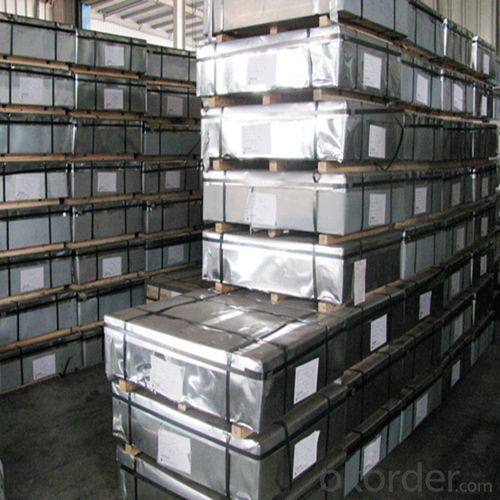
4.Electrolytic Tin Plate Coils and Sheets for Foods Metal Packaging Specification
Standard | ISO 11949 -1995, GB/T2520-2000,JIS G3303,ASTM A623, BS EN 10202
|
Material | MR,SPCC |
Thickness | 0.15mm - 0.50mm |
Width | 600mm -1150mm |
Temper | T1-T5 |
Annealing | BA & CA |
Coil Inner Diameter | 508mm |
Weight | 6-10 tons/coil 1~1.7 tons/sheets bundle |
Passivation | 311 |
Oil | DOS |
Surface | Finish,bright,stone,matte,silver |
5.FAQ of Electrolytic Tin Plate Coils and Sheets for Foods Metal Packaging
-What your tinplate material is used for ?
Tinplate is widely used for the packaging of products. Such as food cans,
beverage cans, pet cans, closures, general line cans and so on.
Printed Tinplate is offered!!
-How to place .an order or contact you ?
Please send us Email. we will give you a quick response in seconds .
- How is your quality ?
All our quality is prime even the secondary quality . We have many years experience
In this field with serious quality control standard . Advanced equipment, We welcome your visit to our factory .
- Q:What are the factors that determine the lifespan of tinplate packaging?
- The factors that determine the lifespan of tinplate packaging include the quality of the tin coating, the thickness of the tinplate material, the presence of protective coatings, the storage conditions (e.g., temperature and humidity), exposure to external elements (e.g., moisture, oxygen, and chemicals), and the overall handling and care during transportation and use.
- Q:Tin can weldingHow can the side of the column of the pop top be welded or pressed?,
- Mainly divided into the tank, the tank cover and the tank bottom three parts. The tank body is made of a piece of iron material through the curl bending machine, by using copper welder and welding. Now the mainstream of aerosol cans, food cans and beverage cans are produced by this method.
- Q:Can tinplate packaging be used for home decor products?
- Yes, tinplate packaging can be used for home decor products. Tinplate is a versatile material that can be easily molded into various shapes and sizes, making it suitable for packaging a wide range of home decor items such as candles, vases, small decorative objects, and more. Additionally, tinplate offers a sleek and attractive look, which can enhance the overall aesthetic appeal of the home decor products.
- Q:What are the different closure mechanisms for tinplate cans?
- The different closure mechanisms for tinplate cans include: slip cover lids, press-on lids, pull-tab lids, twist-off lids, and peel-off lids.
- Q:What are the advantages of using tinplate for automotive parts?
- Tinplate offers several advantages for automotive parts. Firstly, it provides excellent corrosion resistance, making it ideal for parts exposed to harsh environmental conditions. Additionally, tinplate offers good formability, allowing for complex shapes and designs, providing flexibility in manufacturing. It also offers high strength and durability, ensuring long-lasting performance and safety. Furthermore, tinplate is lightweight, contributing to improved fuel efficiency and reduced emissions. Lastly, it is a cost-effective material, providing value for money in automotive part production.
- Q:What are the main factors affecting tinplate coil loading and unloading?
- The main factors affecting tinplate coil loading and unloading include the weight and size of the coils, proper handling and lifting equipment, the condition of the packaging and protective material, transportation and storage conditions, and adherence to safety protocols and guidelines.
- Q:What are the transportation considerations for tinplate?
- Some transportation considerations for tinplate include ensuring proper packaging and securing of the product to prevent damage during transit, choosing appropriate modes of transportation based on distance and cost efficiency, and complying with any regulations or restrictions related to the transportation of tinplate. Additionally, considering environmental factors and opting for sustainable transportation options can also be a consideration for tinplate transportation.
- Q:What are the main applications of tinplate in the textile industry?
- Tinplate is commonly used in the textile industry for various applications such as packaging, labeling, and decorative elements. It is often used to create tinplate cans or containers for storing textile products, ensuring their protection and preservation. Tinplate is also utilized in labeling and branding, providing a durable and attractive surface for printed information. Additionally, tinplate can be formed into decorative elements like buttons or fasteners, adding aesthetic value to textile products.
- Q:How does tinplate contribute to the reduction of food waste?
- Tinplate contributes to the reduction of food waste by providing a protective and durable packaging solution for various food products. Its corrosion-resistant properties ensure the longevity of the packaging, preventing spoilage and contamination. Additionally, tinplate's ability to maintain the freshness and quality of food for an extended period helps reduce waste caused by premature expiration.
- Q:What are the different types of tinplate lamination?
- There are primarily two types of tinplate lamination: single-sided lamination and double-sided lamination. In single-sided lamination, only one side of the tinplate is laminated with a protective layer, typically made of a polymer or lacquer. On the other hand, double-sided lamination involves laminating both sides of the tinplate, providing enhanced protection and barrier properties.
1. Manufacturer Overview |
|
|---|---|
| Location | |
| Year Established | |
| Annual Output Value | |
| Main Markets | |
| Company Certifications | |
2. Manufacturer Certificates |
|
|---|---|
| a) Certification Name | |
| Range | |
| Reference | |
| Validity Period | |
3. Manufacturer Capability |
|
|---|---|
| a)Trade Capacity | |
| Nearest Port | |
| Export Percentage | |
| No.of Employees in Trade Department | |
| Language Spoken: | |
| b)Factory Information | |
| Factory Size: | |
| No. of Production Lines | |
| Contract Manufacturing | |
| Product Price Range | |
Send your message to us
Electrolytic Tinplate Coils and Steets for Tin Cans Making
- Loading Port:
- Tianjin
- Payment Terms:
- TT OR LC
- Min Order Qty:
- 25 m.t
- Supply Capability:
- 7000 m.t/month
OKorder Service Pledge
OKorder Financial Service
Similar products
New products
Hot products
Related keywords
